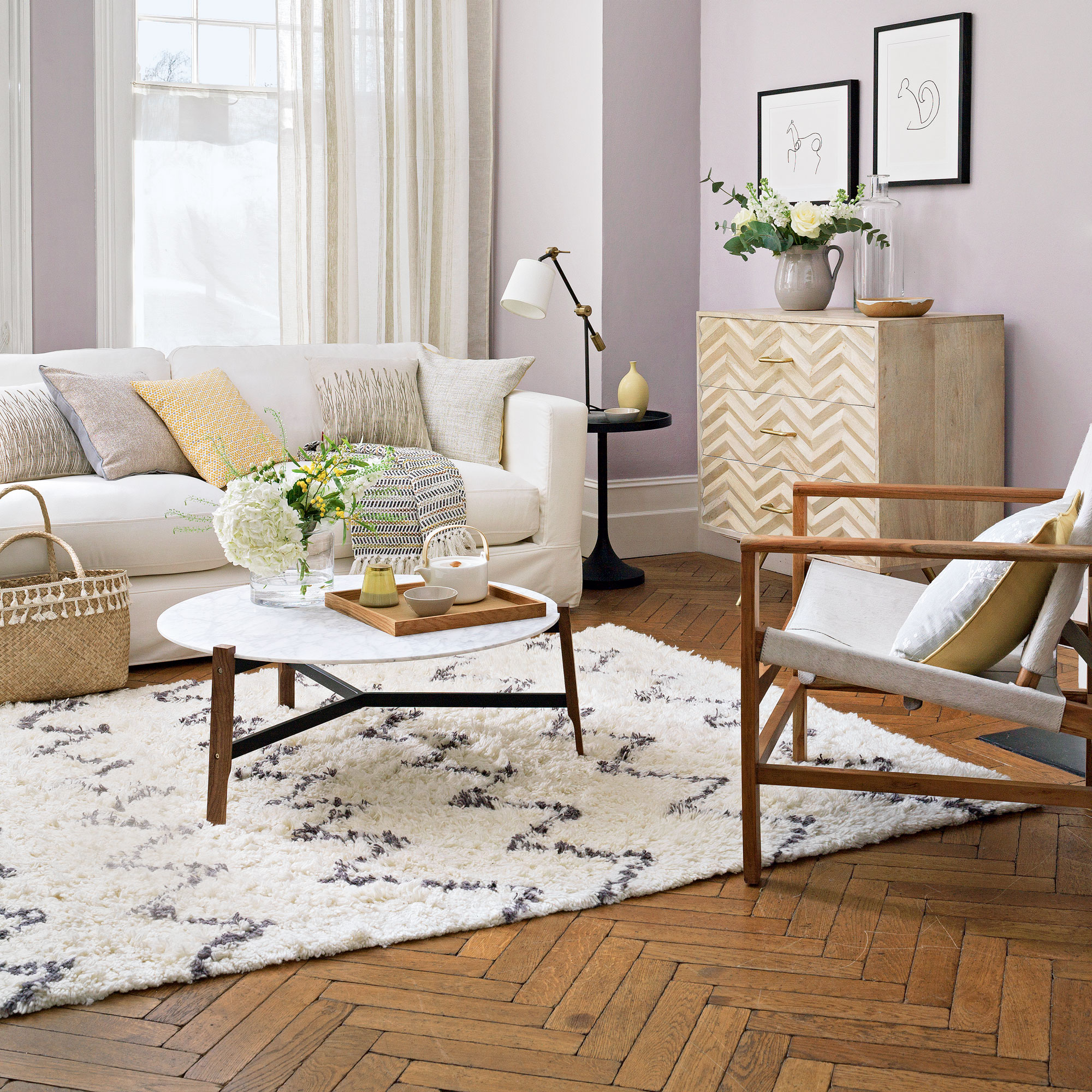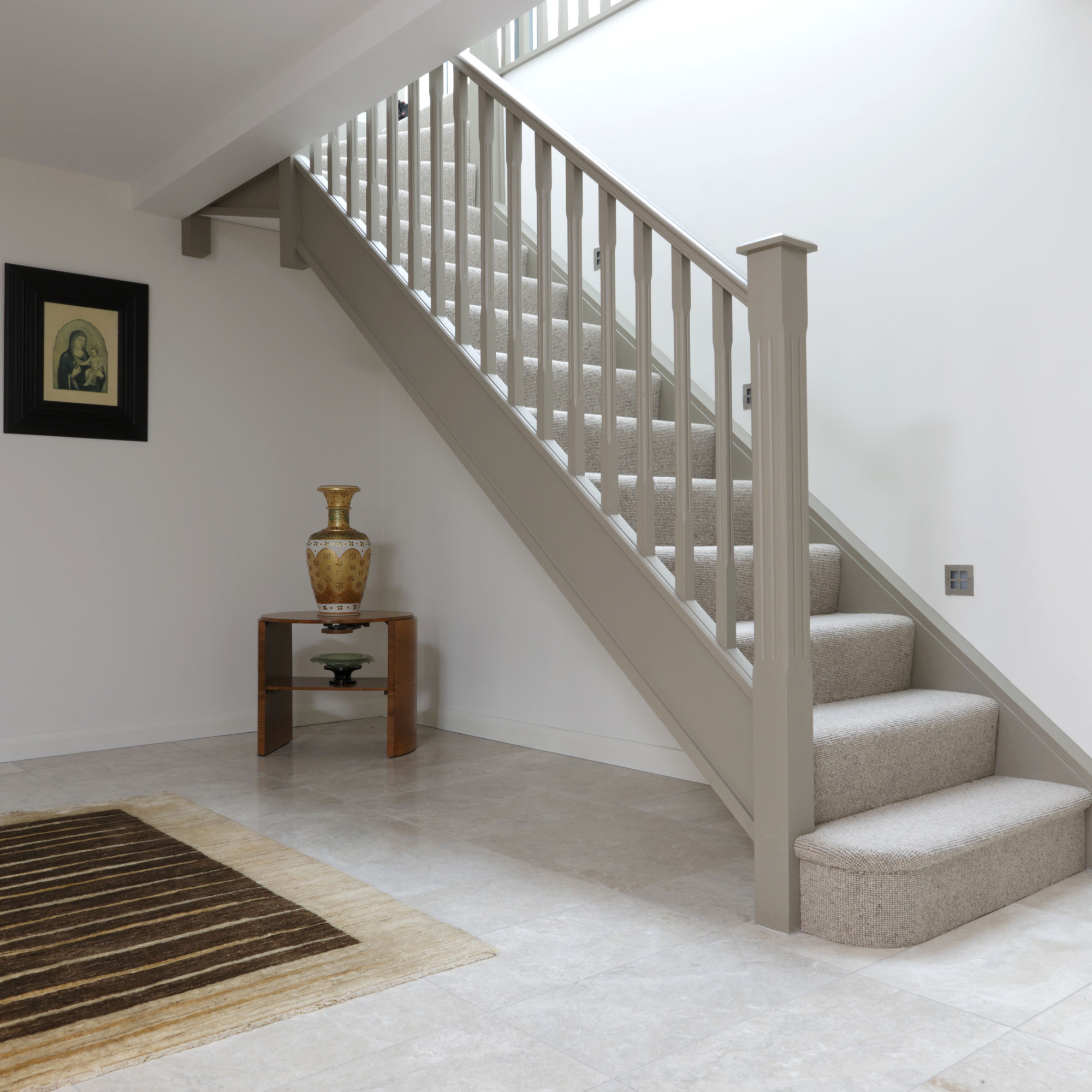How to insulate a floor – a step-by-step guide
Find out how to insulate a timber or solid concrete floor and make your home more energy efficient

It is worth giving some proper thought to how to insulate a floor. Depending on the age of your property, floors often allow heat to escape. Now's the time to consider ways to insulate your home on a budget. If you’re planning to keep costs down and insulate the floor yourself, you firstly need to work out what type of floor structure you have. This will determine the best materials and technique to use to complete the job.
Thankfully installing the best floor insulation can help put a stop this, making your home warmer and more eco-friendly. According to the Energy Saving Trust, insulating under the floorboards of a ground-floor detached house could help save approximately £85 on energy bills.
What type of floor do you have?
Older homes are more likely to have suspended timber floors. This means you have a crawl space underneath your ground floor. ‘If it’s a type of ground floor where timber joists are supported by foundations or load bearing walls of a home, then wooden floorboards are secured to the top of the joists, says Bradley Hirst, technical services manager at Knauf Insulation. 'This creates a space underneath the floorboards for ventilation.'
One way to check, rather than lift up and potentially damage your floor covering in the process, is to look if there are air bricks or ventilation bricks on the outside wall(s) of your house. If there are, and they're below floor level it's highly likely that you have a suspended floor.
In contrast, newer homes tend to have ground floors made of solid concrete.
How to insulate a floor – a step-by-step guide

When looking at how to insulate a floor, follow these steps:
1. Work out how much insulation you need
As a guide, measure the length and width of the room in metres, and multiply that number to get the area in square metres. ‘This will give you the amount you need plus a little extra when taking the width of the joists into account,’ says Thomas Goodman, property and construction expert at MyJobQuote.
Sign up to our newsletter for style inspiration, real homes, project and garden advice and shopping know-how
2. Prepare and clear your space
Insulating your floor will require you to either temporarily take up your existing floor covering. Care needs to be taken when pulling it up, or completely replacing it with a new surface.
To prep a solid concrete floor, make sure you clean, dust and vacuum up any dirt or debris to ensure the insulation can be fitted evenly. ‘You’ll need to remove any skirting on the walls, too, as the floor will be at a higher height once the insulation is added,’ says Thomas Goodman.
With suspended timber floors, you need to ensure there are no issues with ventilation. Otherwise, this which could lead to fungus growth and timber rot. Check there isn’t any debris obstructing airflow and make sure there aren’t any loose nails that could damage insulation when fitted. ‘You also need to ensure that any insulation you install doesn’t block the air bricks,’ says Thomas Goodman.
3. Make sure you have the right equipment
You’ll need PPE clothing equipment. Check the manufacturer's website of your chosen insulation for a recommended list. As a guide, full length overalls, safety gloves and glasses, as well as a respiratory mask will all help to protect you while carrying out the job. You will also need a carpenter pencil and tape measure to help cut your insulation to the correct size. Depending on what insulation you’re using, you will need either scissors, a small saw or a knife to cut through the material, as well as either a stapler, hammer, glue or drill and screws, for securing the insulation in place.
4. How to insulate a floor – solid concrete

Wondering how to insulate a concrete floor? There are lots of materials available to you when installing insulation on a solid floor. The most popular tends to be rigid foam boards.
Before installing, it’s recommended that a damp-proof membrane is added to prevent moisture build-up. Once laid, measure the width of the room and cut your boards to size ready to fit. ‘We recommend starting in one corner and placing your first board flush with both corners of the room. Lay the next board side by side with the first board and offset it in a brick-work pattern. Cut any boards to fit so that the floor is covered, with each board pushed up to the previous ones,’ says Thomas Goodman.
Once finished, the floor should be neatly covered in insulation with no gaps. Next, lay tongue and groove chipboard on top, leaving a 10mm gap around the edge of the wall for skirting. Glue together and wipe away excess glue to keep the floor level.
‘The insulation boards do not need to be attached in any way as they are laid flat on top of the damp-proof membrane. Then the chipboard is placed on top of the insulation boards. The chipboard should be glued together to prevent slippage but no further attachment should be necessary,’ advises Thomas Goodman.
If using multi-foil, simply lay the product directly on to the solid floor and butt joint any edges together and seal over with tape.
‘Once the insulation is laid and joined together it will generally keep its location very well while you’re installing your chosen flooring on top,’ says William Bown, managing director of SuperFoil Insulation. ‘You could also add a layer of ply over the insulation before flooring to give a better overall finish,’ he says.
5. How to insulate a floor – suspended timber

There are two ways to install insulation for a suspended timber floor, and which one you choose will depend on your building set up.
If there is crawl space under your floorboards, or a cellar below, you can install insulation from below. It might be easier to use rigid foam boards or multifoil insulation in this instance. Simply measure and cut them to size and then push the boards into the spaces between the joists until they are flush with the floor above. If using multifoil, you’ll staple it into place. Then nail battens to the joists underneath to provide support and to help keep both types of insulation secure.
If installing from above, mineral wool insulation that is also used in roof and loft insulation tends to be the best material to use. ‘A fibrous ‘breathable’ insulation, such as mineral wool can fit the space under a floor more snugly, reducing air movement and its breathable properties help reduce the risk of rotting timbers, by allowing water moisture to pass through more easily,’ says Chayley Collis at Green Building Store.
Firstly, drape netting over the joists to create a hammock that is deep enough to allow the insulation to sit level with the top of the joists. Staple it in place. Next, cut the insulation to size. It needs to be the same width as the gap between the joists. Push one end in so it fits tightly against the wall. Then unroll it along the length of the joist, tucking it in at the sides. Repeat until all the joists have been filled with insulation.
‘Make sure there are no gaps. And always use a crawl board that spans several joists to prevent treading on and damaging the insulation. Either could affect its thermal performance,’ says Bradley Hirst.
6. Insulate around pipes and radiators

If your floor is solid, it’s likely that your pipes will remain above level and exposed. If this is the case, lag them with foam pipe insulation and consider boxing them in to conceal them. ‘Installing foil behind radiators will help insulate them further,’ says Thomas Goodman.
Pipes and cablework run under suspended timber floorboards need to be insulated before you add any layers of floor insulation.
7. Seal gaps
If using mineral wool insulation, you won’t need to seal or tape the product. ‘If installed correctly, the material’s friction fits to the joists and flexes around pipes, preventing any gaps,’ says Bradley Hirst.
However, sealing round gaps is essential when installing multi foil or rigid foam boards. ‘You need to ensure that your new insulation provides an airtight barrier that will not allow draughts to get through,’ says William Bown. ‘With multifoil insulation and rigid foam boards, you can use a foil tape to ensure all gaps, edges, and any penetrations are sealed properly.’
8. Get extra advice on how to insulate a floor
If you don’t feel comfortable insulating the floor yourself, you should get a professional to prepare, measure and fit the insulation for you. Look at National Insulation Association to sure the installer is a member.

Sophie Vening is a freelance journalist and editor with more than 16 years’ experience writing about homes and properties. She’s worked for some of the UK’s leading interiors, self-build and property titles including, Grand Designs, Ideal Home, House Beautiful, Build It, The Metro Homes & Property and The Evening Standard Homes & Property.
She enjoys writing about complex issues in an easy-to-understand way.